Physical Address
304 North Cardinal St.
Dorchester Center, MA 02124
Physical Address
304 North Cardinal St.
Dorchester Center, MA 02124
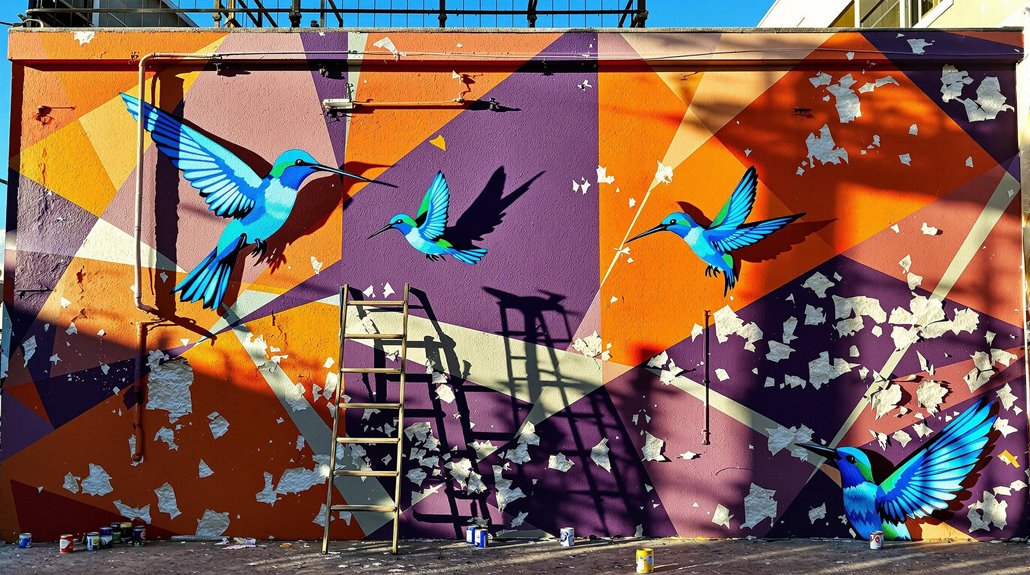
You're about to discover South America's most enchanting street art destinations, where vivid murals tell stories of revolution, culture, and social change. From Bogota's politically charged La Candelaria to Valparaiso's rainbow-hued hillsides, these urban canvases transform ordinary streets into open-air galleries. Whether you're an art enthusiast or casual traveler, these 13 locations showcase how local artists have turned their cities into living masterpieces that you won't find in any traditional museum.
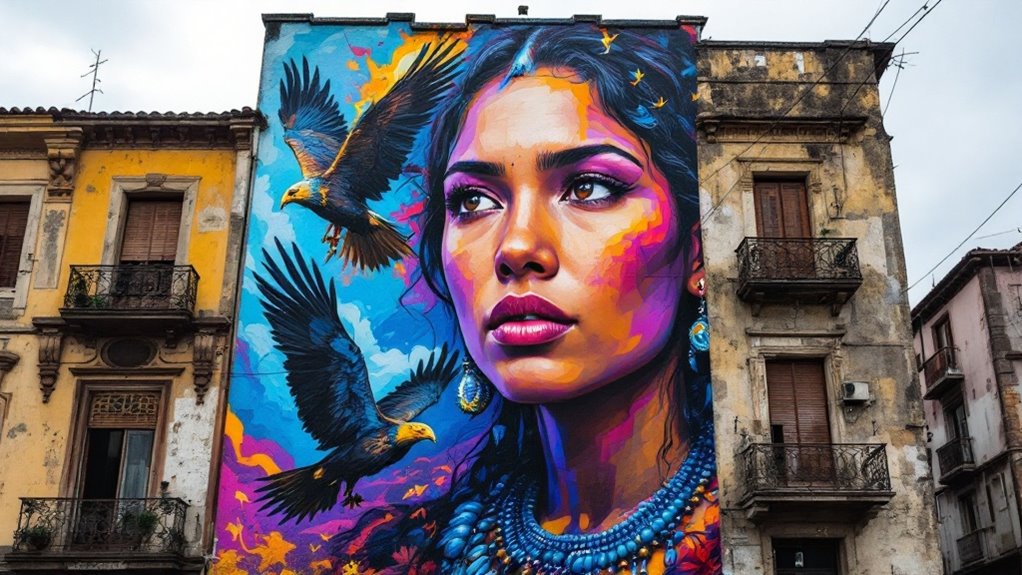
While many cities strictly regulate street art, Bogota's La Candelaria district has emerged as a lively hub for political expression since the decriminalization of graffiti in 2011.
You'll find powerful murals addressing Colombia's complex social issues throughout the district. The area's rich artistic heritage includes the historic El Chorro de Quevedo, where artists blend pre-Columbian and colonial imagery, while artists like Carlos Trilleras showcase large-scale depictions of Wayuu indigenous communities.
Vibrant murals in La Candelaria weave together Colombia's indigenous heritage with modern social commentary through bold artistic expression.
DJ Lu's stark works expose violence against the homeless, and Bastardilla's feminist pieces challenge systemic inequality.
The district's walls serve as canvases for commemorating victims of armed conflict and critiquing military scandals. Look for Toxicomano Collective's distinctive style, mixing baroque elements with contemporary social commentary.
International collaborations, like those with Argentine artist Ciclope, add fresh perspectives to the district's politically charged atmosphere.
As Chile emerged from the Pinochet dictatorship, Valparaiso's Open Air Museum took shape as a powerful symbol of artistic liberation.
You'll discover its origins trace back to 1969 when art professor Francisco Méndez Labbé and his students began transforming Bellavista Hill with lively murals.
Today, as part of Valparaíso's UNESCO World Heritage Site, the museum showcases 20 stunning murals that blend seamlessly with the city's historic architecture.
You're walking through living history as you explore these works, which combine traditional Chilean motifs with contemporary themes.
The project, influenced by Pablo Neruda's exposure to Mexican muralism, reflects both the city's maritime prosperity and its cultural renaissance.
It's a reflection of how public art can breathe new life into urban spaces while preserving local heritage.
The art serves as a profound form of expression, often depicting themes of discontent and confusion that resonate deeply with the local community.
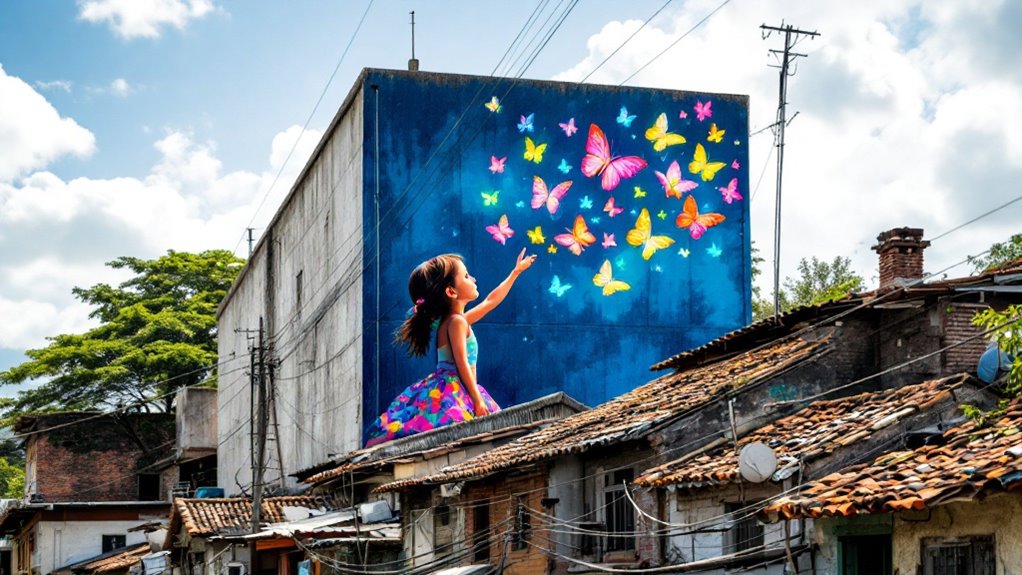
Once notorious for violence and conflict, Medellín's Comuna 13 has transformed into a living gallery of hope through colorful street art and innovative urban planning.
You'll find electric escalators stretching 385 meters up the hillside, cutting commute times from 35 to just 6 minutes. These connect seamlessly with metro stations and cable cars, making the once-isolated neighborhood accessible to both residents and visitors.
The area's walls tell powerful stories through murals created by local artists like Chota_13 and MariodelBarrio13. You'll see artwork depicting resilience, peace, and historical memory. The vibrant artworks feature indigenous and animal themes throughout the neighborhood's corridors. Local vendors sell exotic fruits from colorful carts, adding to the area's vibrant atmosphere.
The Casa Kolacho cultural center now trains youth in hip-hop culture's four elements, while "Graffitour" guides share stories of transformation. What was once a symbol of urban strife now draws 25,000 weekly visitors, supporting local vendors and family businesses.
Much like Comuna 13, São Paulo's Beco do Batman stands as a demonstration to art's power to transform communities.
This lively alley, named after a 1980s Batman mural, has evolved from local graffiti spot to internationally acclaimed open-air gallery.
You'll find ever-changing murals between Rua Medeiros de Albuquerque and Rua Harmonia, where artists refresh their works every few weeks. The murals include the iconic Koi carp artwork by Eduardo Kobra celebrating Japanese immigration.
The styles range from psychedelic cubism to political statements, with over half the pieces addressing social issues like inequality and racism.
For the best experience, visit on weekdays to avoid the 500+ daily weekend crowds.
While entry is free, guided tours (R$80-R$120) offer deeper insights into the art's history.
The area's also become an economic driver for Vila Madalena, supporting local businesses and tour services.
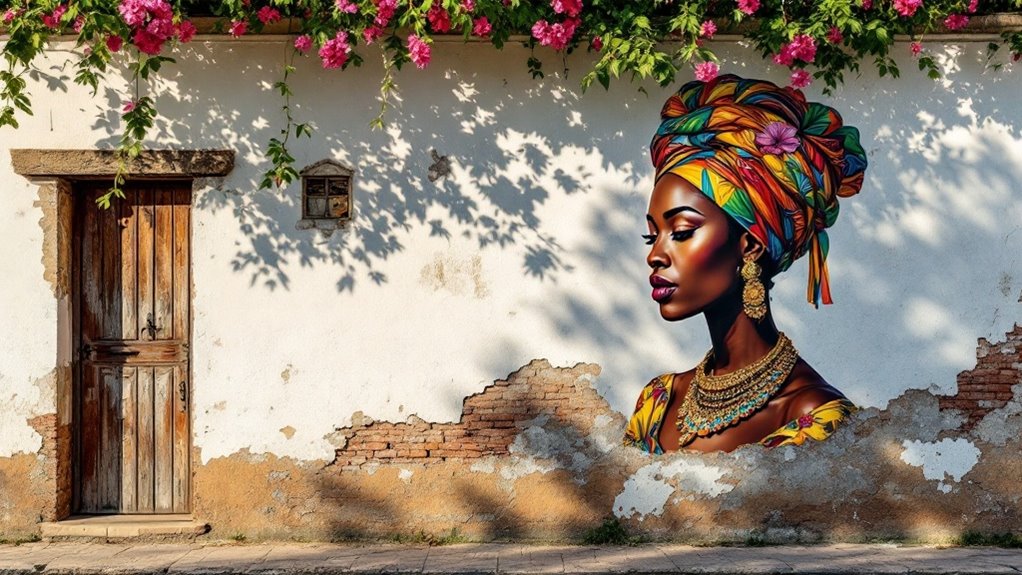
When Getsemaní's walls first burst into color during the 2013 International Festival of Urban Art, this former red-light district began its transformation into Cartagena's cultural heart.
Today, you'll discover striking works like Colombia's largest mural, *Prisma Afro*, and the beloved *Smiling Afro-Colombian Woman* by DEXS on Calle Sierpe. Initial festival murals have inspired ongoing street art projects throughout the neighborhood.
You won't want to miss Callejón Angosto's umbrella canopy or the Maria Mulata bird mural based on local folklore. Each piece tells stories of Getsemaní's rich history, from Pedro Romero's 1810 independence march to modern-day resistance against gentrification.
While tourism has brought new life to the neighborhood, it's also created challenges for long-term residents.
Book a walking tour with local artists to support the community and understand the deeper meaning behind these lively streets.
Tucked along the Port of Buenos Aires, La Boca's kaleidoscope of colors emerged from humble beginnings in the late 1800s when immigrant dockworkers painted their corrugated-iron homes with leftover shipyard paint.
You'll find the iconic Caminito street, transformed in 1960 by artist Benito Quinquela Martín into an open-air museum. The murals tell powerful stories of immigration, tango, and working-class struggles, while celebrating local heroes like the volunteer firefighters and Boca Juniors football club. Wandering through the less touristed backstreets reveals stunning hidden murals that most visitors never see.
For the best experience, visit early morning to avoid crowds and stick to designated tourist zones.
Book a guided tour through Milhouse Hostel or BA Street Art to understand the deeper context behind the artwork.
Don't miss the latest additions by Grupo La Boca collective, who continue to preserve the neighborhood's rich cultural heritage through their 2025 mural project.
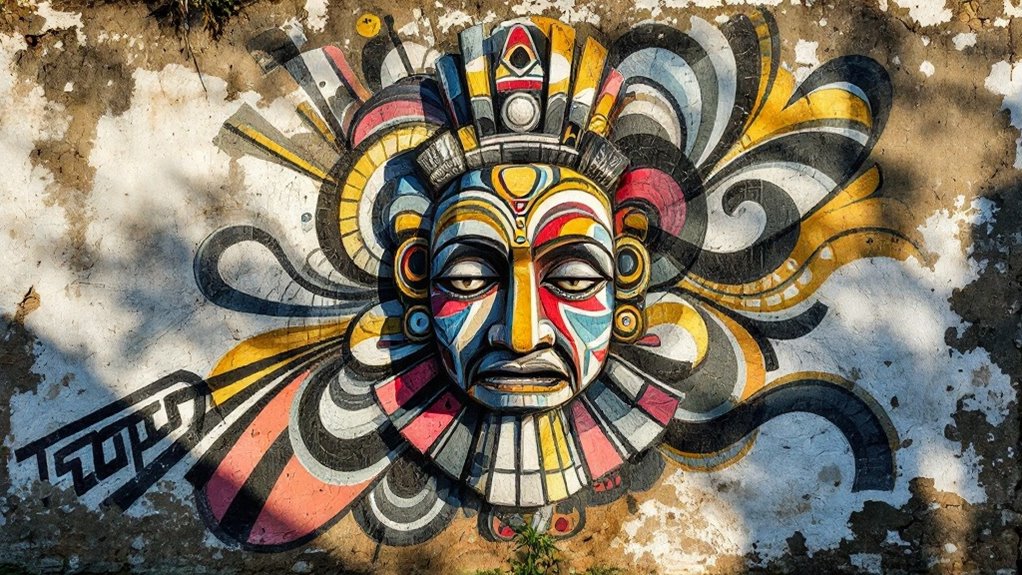
Deep in Colombia's Alto Magdalena region, San Agustín offers a remarkable fusion of ancient stone artistry and lively urban expression.
The ancient artworks were primarily created during the Middle Period from 425-1180 AD.
One will discover over 600 monolithic statues from pre-Columbian times, with 200 preserved in the UNESCO-listed Archaeological Park, standing up to 12 feet tall.
The town's modern CityTour Murals project spans 7 km, where one will see street artists cleverly incorporating pre-Hispanic motifs into contemporary works.
They've adapted traditional techniques, including sap-based paints similar to those used on ancient statues.
Watch for recurring symbols like jaguar-human hybrids and "Double Me" guardian spirits that bridge past and present.
For $15, you can explore the Archaeological Park, then join a street art tour that'll show you how San Agustín's creative spirit continues to evolve while honoring its indigenous roots.
Moving south from Colombia's ancient artistry, you'll discover Lima's Barranco district stands as Peru's most lively street art destination.
This bohemian neighborhood's creative spirit sparked a street art revolution in 2015 when artists responded to the mayor's controversial mural removal with the defiant #BorraronUnoPintaremosMil movement. Known as Lima's trendiest spot, Barranco attracts artists and creatives from across South America.
You'll find signature works by local masters like Jade Rivera's dreamlike children near the Bridge of Sighs and Yandy Graffer's swirling ocean-inspired pieces. The iconic Second Home B&B showcases an impressive blend of traditional and street art.
Don't miss the colorful Bajada de los Baños pathway, where murals line your descent to the Pacific.
The annual Muraliza el Barrio festival keeps the scene fresh, while artists like Elliot Tupac and Entes blend typography, Andean traditions, and African motifs into massive works that transform gray walls into powerful statements of cultural resistance.
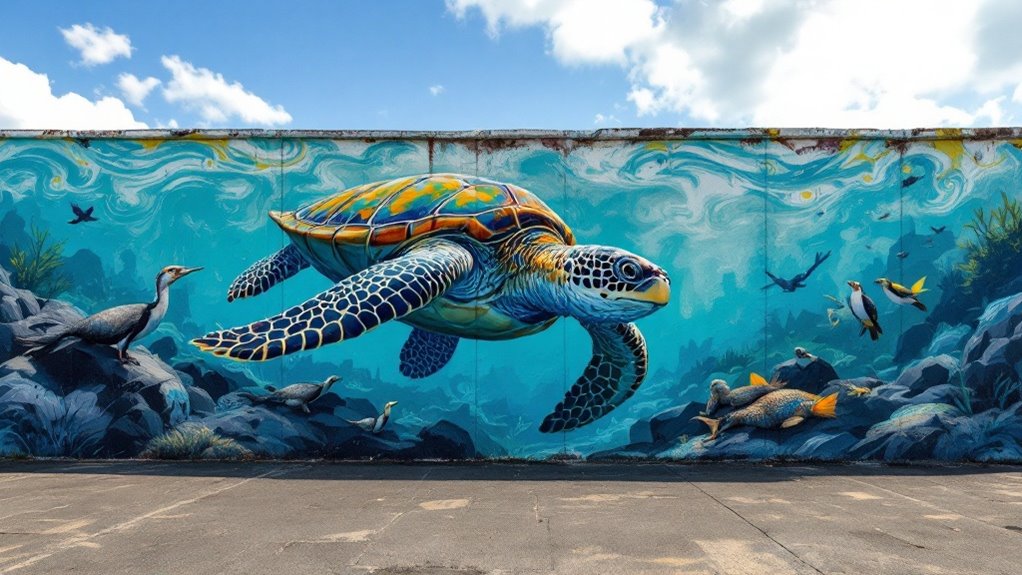
Along Puerto Ayora's sun-drenched shores, three distinct art zones showcase the Galapagos Islands' rich marine heritage through lively street murals.
You'll discover dynamic depictions of sea turtles, manta rays, and blue-footed boobies adorning the coastal walkways and public spaces near Charles Darwin Avenue.
The stunning artwork was captured by photographer Robert Garrigus in June 2016, preserving these vibrant marine murals for posterity.
Don't miss Jardin Ceramica, where ceramic mosaics blend seamlessly with painted murals, creating an immersive celebration of local ecosystems.
The artworks feature mythological elements like mermaids swimming alongside realistic portrayals of the islands' iconic wildlife.
These murals serve a deeper purpose beyond their beauty.
Art transcends mere aesthetics here, becoming a visual voice for environmental awareness and cultural preservation.
They're powerful tools for environmental education, highlighting conservation issues while reflecting the area's UNESCO World Heritage status.
Local artists and international collaborators continually refresh these pieces through annual festivals, ensuring the message of marine preservation stays current.
From the marine-inspired art of the Galapagos, we turn to the surrealist wonders of Bellavista Hill in Chile.
You'll encounter this UNESCO World Heritage site's roots stretch back to 1969, when an art professor and students launched a groundbreaking public art project that would become one of Chile's earliest organized street art movements.
While Pinochet's dictatorship temporarily silenced the walls, the project roared back to life in 1992.
Today, you'll uncover dreamlike compositions by Roberto Matta, modernist works by Nemesio Antúnez, and the distinctive black-outlined socialist murals of the Brigada Ramona Parra collective. Visitors can explore the site through self-guided walking tours using mobile apps that work offline.
Don't miss Inti Castro's large-scale mythological figures or Un Kolor Distinto's contemporary contributions.
The site combines traditional murals with mosaic techniques, creating a unique blend of surrealist and hyper-realistic styles.
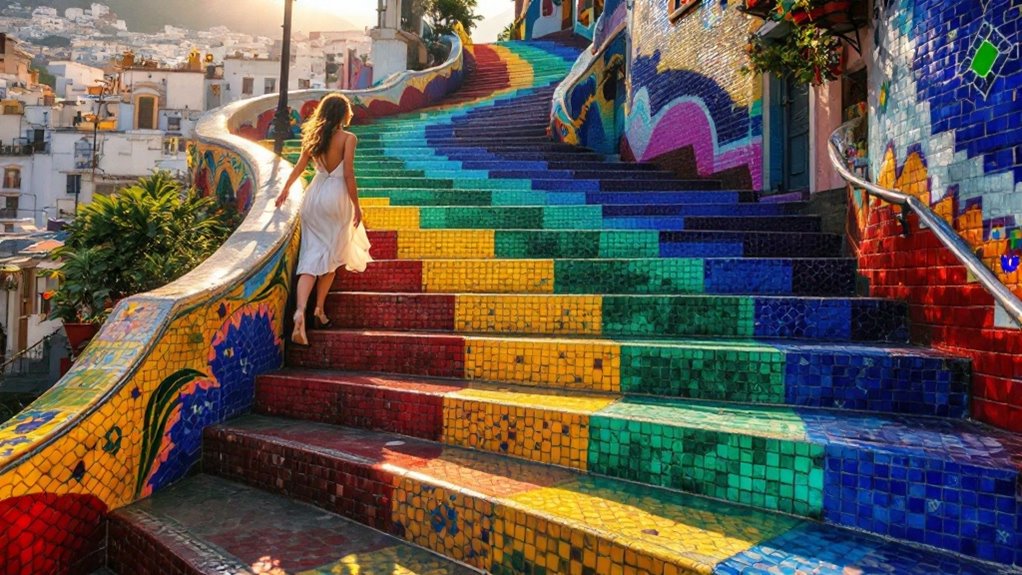
The world's most lively staircase unfolds across 215 steps in Rio de Janeiro's Lapa neighborhood, where Chilean artist Jorge Selarón transformed a crumbling walkway into an iconic mosaic masterpiece.
You'll find over 2,000 tiles from more than 60 countries adorning this colorful tribute to Brazil, with 300+ hand-painted pieces by Selarón himself featuring his signature pregnant African woman motif.
What started with Brazil's national colors evolved into a global art project as visitors began donating tiles from their homelands. Initially, Selarón faced mockery from neighbors due to his bold color choices, but his vision eventually won them over.
Visit early morning or late evening to avoid crowds and capture the best photos. While you're there, you'll spot local vendors selling refreshments and Brazilian beach towels.
The steps have starred in everything from U2 music videos to Olympic promotions, making them one of Rio's most photographed attractions.
Nestled in Colombia's coffee region, Salento's streets serve as an open-air gallery celebrating the town's rich coffee heritage through lively murals and artistic displays.
You'll discover colorful artworks blending traditional coffee culture with modern street art at every turn. The town's soulful cultural voyage draws travelers seeking both artistic and coffee experiences.
Highlights you won't want to miss:
The town's UNESCO World Heritage status has inspired artists to incorporate coffee motifs, Spanish colonial architecture, and Antioquian influences into their street art, creating a unique visual experience.
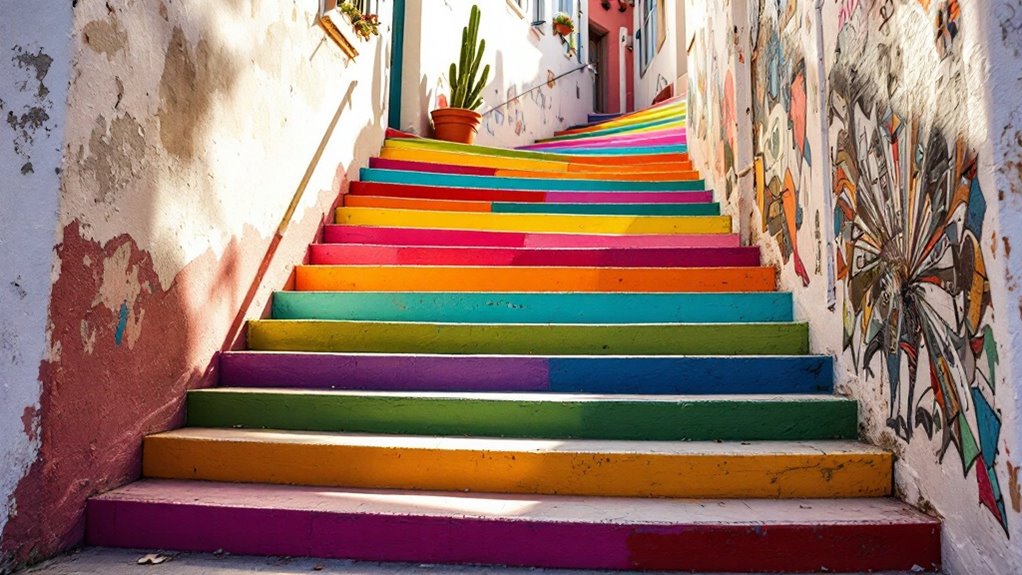
Winding through Valparaíso's UNESCO-listed historic district, Templeman Street's rainbow staircases transform functional pathways into dynamic works of art.
You'll discover these lively steps adorned with geometric patterns, floral motifs, and abstract designs in rainbow hues, connecting the steep hillside neighborhoods near Plaza Aníbal Pinto.
You can access the stairs via the historic Ascensor Concepción funicular or by foot. A single ride on the 100 peso funicular offers a scenic alternative to climbing the stairs. They're surrounded by colorful houses and large-scale murals depicting local culture, including the nearby piano-key-painted stairs.
South American street art serves as a powerful form of cultural expression throughout the continent's urban landscapes.
While the staircases face preservation challenges from coastal weather and foot traffic, local collectives regularly organize restoration work to maintain their beauty.
These painted pathways aren't just Instagram-worthy spots – they represent Valparaíso's identity as a hub for grassroots artistic expression and community-led urban revival.
You will discover South America's street art scene offers an unforgettable journey through culture, politics, and creativity. Whether you're exploring Bogota's activist murals or climbing Rio's mosaic steps, each location tells its own story. Make time to visit these lively neighborhoods, where local artists transform urban spaces into open-air galleries. Don't forget your camera – these ever-changing masterpieces won't look the same next time you visit.